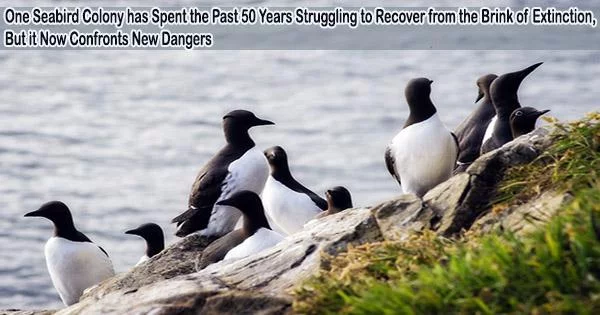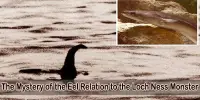Skomer Island off the coast of Wales has seen a spectacular rebound in its guillemot population over the past few decades. Before 1930, there were more than 100,000 common guillemots living on Skomer. However, this number had decreased by roughly 95% by the end of World War II and kept going down for the following few decades.
Chronic oil pollution during the Second World War and a number of significant oil tanker accidents in the years that followed are likely to blame for this population drop. In 1967, for example, the supertanker SS Torrey Canyon spilled over 100,000 tons of crude oil into the English channel.
The Wildlife Trust of South and West Wales’ counts, however, reveal that the Skomer’s guillemot population has been steadily increasing since the 1980s at a rate of roughly 5% year. In 1972, there were around 2,000 guillemots breeding on Skomer. Fast forward to 2023 and that number has skyrocketed to around 30,000.
I (Tim Birkhead) have been doing a long-term study on this resurgence with my colleagues for the past 50 years. When you consider that populations in the country’s northern regions have decreased throughout the same time span, the growth in the Skomer’s guillemot population is astounding.
However, our research also shows that seabirds, especially Skomer’s guillemots, are currently facing a number of serious concerns, with climate change emerging as one of the biggest problems.
Guillemots on the rise
We have been monitoring the survival and breeding success of guillemots on Skomer. Our goal was to determine whether factors like chick production, breeding age, and adult and chick survival rates might account for the species’ reported population growth. It took 30 years until we had a sufficient sample size to address these questions.
Our findings demonstrated that the Skomer bird’s productivity and survival are the only factors contributing to the population growth since 1980. In fact, there’s relatively little immigration or emigration affecting the colony’s numbers.
However, in recent years, oil pollution in the oceans surrounding the UK has significantly decreased. In the 1970s, around 90% of the dead guillemots found on beaches surrounding the North Sea were contaminated with oil. By 2020, this proportion had fallen to 10%.
This decline in oil pollution may be what has allowed the guillemot population on Skomer and other southern regions of the UK to bounce back towards the levels seen before 1930.
Breeding earlier
However, seabirds, including Skomer’s guillemots, continue to face a multitude of threats. Although oil pollution has decreased, it has been surpassed by climate change’s considerably more pernicious and widespread consequences. Climate change has further contributed to the declining robustness of seabird populations, along with ongoing overfishing and the recent advent of avian flu.
One of our most surprising findings is that, since the 1970s, the date of guillemot breeding has advanced by an average of more than two weeks. Climate change is most likely to blame for this development, which has also been observed in other terrestrial bird species.
We think that the early breeding season may be related to the fish prey’s seasonal availability. There is mounting evidence that the distribution and number of marine fish in the UK are being significantly impacted by warming oceans.
Dealing with extreme weather
Climate change is also causing an increase in the frequency and intensity of winter storms. Sustained bad winter weather makes it difficult for guillemots and puffins (another member of the bird family known as auks) to find food. This can lead to devastating “wrecks” where large numbers of dead seabirds wash up on the shore.
In early 2014, a series of storms resulted in the deaths of over 55,000 seabirds around European coastlines, including 15,000 guillemots. In that year, the mortality rate of Skomer’s adult guillemots doubled to 12%.
The rise in the frequency of extreme weather events during the guillemots’ nesting season is more worrisome. Stronger winds, rougher waves, heavy rain, and excessive heat are all summertime phenomena that can hinder guillemot breeding success.
For instance, two unseasonal storms in May 2022 caused numerous guillemots to lose their eggs from breeding ledges, which resulted in the lowest breeding success we have seen on Skomer in many years.
My own long-term research gives us the knowledge we need to recognize and assess the impact of various dangers. In some circumstances, they may also provide us the opportunity to take steps to lessen their consequences. Yet these studies are few and far between.
As I see it, long-term studies on Skomer provide the ammunition that can help us fight the war against climate change and environmental degradation. Now more than ever, it is important that such studies continue.
















